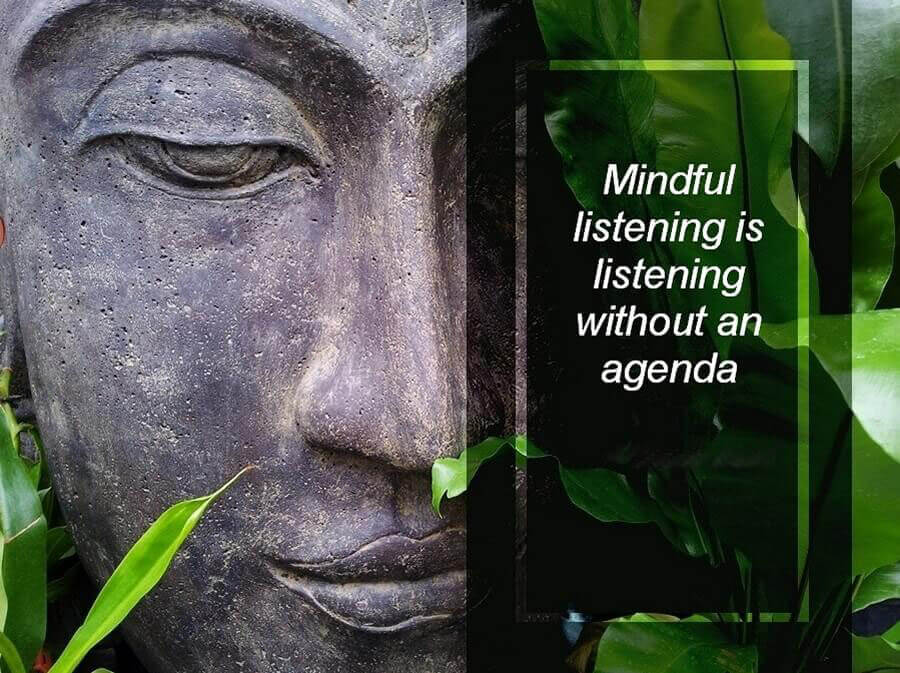-

When COVID struck and my husband joined me in telecommuting full time, I recognized how often during the day he or I would walk into the other’s home office and just start talking or asking questions.
Whoever’s office was barged into might have been in the middle of something but the person interrupting wasn’t paying attention to that; they would just start talking or asking questions. The other person would look up from their computer and appear to be listening to the interrupter but their mind and attention was in their work and they weren’t actually listening at all. This lead to some arguments later when one of us would remind the other about the conversation we’d had earlier and the person didn’t remember what was said.
So, we had to learn how to communicate better. We had to learn how to become more present and aware when communicating. I am happy to say, that we have adjusted to sharing space ALL DAY LONG with each other, getting our own needs met and meeting the needs of the other.
How often have you had a conversation with someone and thought you were paying attention to them – only to realize later that you can’t remember what they said? Or, maybe you got distracted while they were talking and completely missed the message they were trying to convey?
It can be really hard to tune out distractions such as noise, electronic pings – not to mention our own thoughts and reactions to things being said.
When we listen mindfully, we can become aware of these barriers and still remain open to the other person’s ideas and message. The goal of listening mindfully is to silence the internal noise of your own thoughts so that you can hear the whole message and so that the person speaking feels heard and understood. It also allows for less reactivity and triggered emotions.
Here are some simple tips and techniques for improving your listening skills:
- Simplify your surroundings: workplaces are often full of distractions (phones, multiple screen monitors, printers and other electronic devices. Keep your workspace tidy and mute your devices.
- Give yourself time: Before the conversation, take a minute or two to calm and focus your mind before you meet with someone. Practice a breathing technique such as this:

- Before you begin talking with someone, notice if they are able, willing and READY to listen; you might have to ask them if it’s a good time for you to talk or ask a question.
- Become present. When you listen mindfully, your focus should be on the person you are listening to, without distractions. Let go of thinking that you know what the other person is going to say and also any expectations of how you think the conversation will go.
- Cultivating empathy. We often see the world through the lens of our own experiences, personality and beliefs. When you’re empathic, you can understand a situation from someone else’s point of view.
- Listen to your own “cues.” Our cues are the thoughts, feelings and physical reactions that we have when we feel anxious, annoyed, angry or frustrated and they can block out ideas and perspectives that we’re uncomfortable with. Mindful listening can help us to be more aware of our cues, and allow us to choose not to let them block communication.
- Listen attentively. Give your total attention to the other person and don’t let other thoughts or feelings (like what you are going to say next) distract you.
Mindful Listening is pretty straightforward: simply LISTEN! Listen carefully and attentively. Pay complete attention to the other person, and don’t let other thoughts (e.g. what you are going to say next) distract you. And, remember to breathe.
And then, PAUSE and consider the impact of your words – before you speak.
About Mindfulness
There is a sanctuary in each of us, a place of serenity and balance. A place of stillness. It is a place from which we are disconnected much of the time. Spending time in meditation - it is possible to rediscover this inner sanctuary.
Testimonials
"I don't write testimonials often, however my experience with Robyn Beckman is a must share, since I strongly believe she can help many people dealing with stress, anxiety or just hoping to improve their lives through the practice of mindfulness meditation. Robyn is a true MASTER mindfulness instructor; she has a great deal of experience that allows her to guide you and coach you in your mindfulness journey. Her keen ability to pin point areas of improvement and challenge allows the student to grow and be motivated in daily practice. Her compassion and empathy are limitless.
I am grateful and feel very lucky to have found her; she has been an important part of my personal growth and daily mindfulness awareness and practice."
~ Carlos C - Port Orchard, WA
